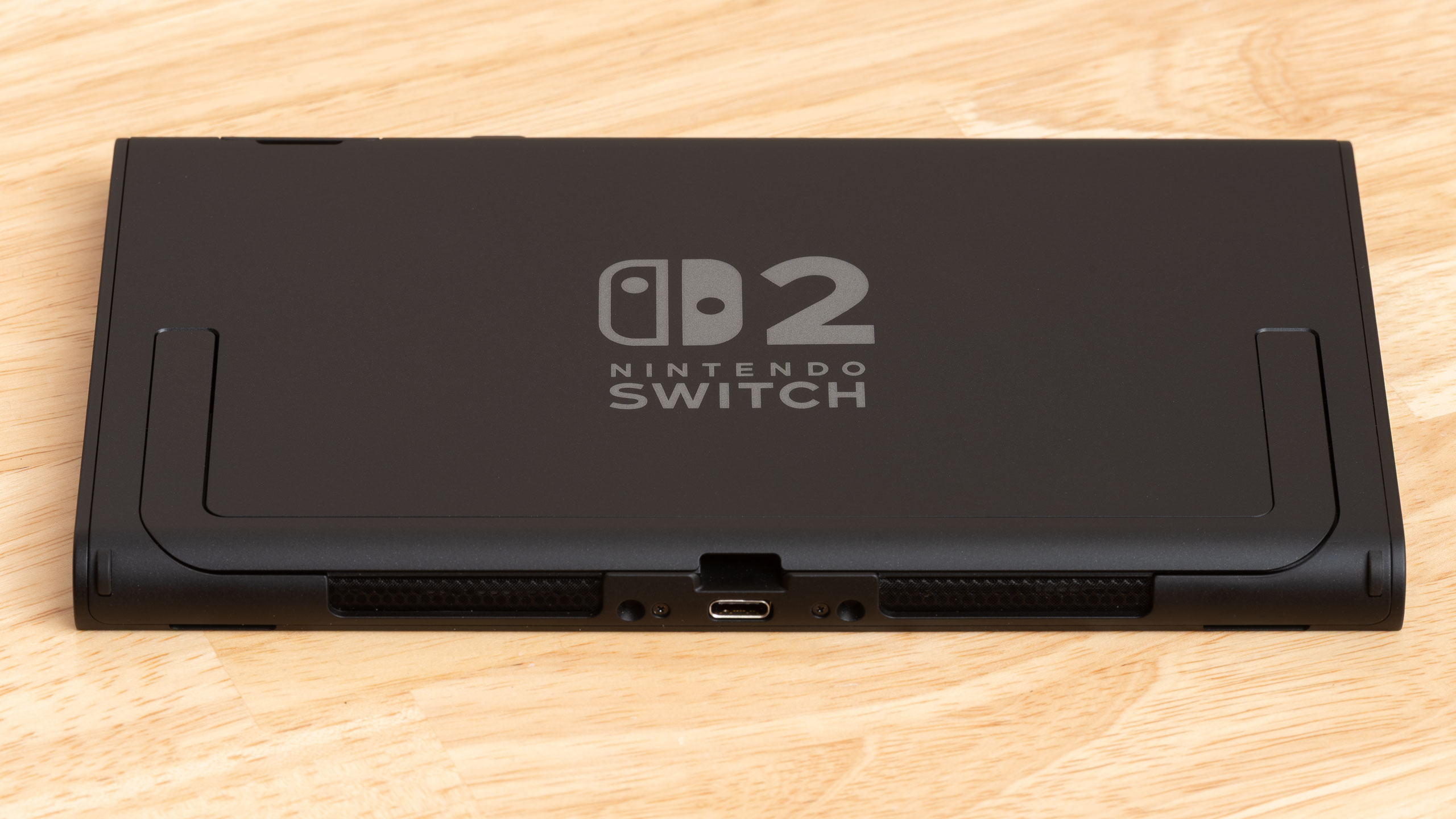Nintendo is restricting the Switch 2's USB-C port — most third-party docks and accessories won't work thanks to proprietary protocols
Third-party docks are locked out

The Nintendo Switch 2 offers valuable and much-needed upgrades over the original Switch. It features a larger, higher-resolution screen with a 120 Hz refresh rate, bigger Joy-Con controllers that now attach magnetically, improved graphics capabilities, and even some new social features. However, it appears that the company has limited the functionality of the onboard USB-C port.
Nintendo has intentionally implemented measures to restrict third-party accessories, including docks, hubs, and other accessories, from working with the new Switch 2. According to two accessory manufacturers who spoke to The Verge, the console maker is making use of a new encryption method as well as an encryption chip. Previously, a similar report by GamesRadar suggested that the change in power requirements (20V) on the Switch 2 has restricted accessory makers like Jsaux, from making docks for the new handheld hybrid console. However, it seems that the real reason is that Nintendo has made changes to the USB-C protocols, which now require “re-adaptation for both power delivery and video output."
Further investigation done by Sean Hollister, senior editor at The Verge, reveals more evidence. Traditionally, when a user plugs a dock or hub into a USB-C port on a laptop or tablet, a standardized set of structured instructions is sent out to enable successful communication between the host and the dock. The instructions first deliver the correct amount of power using the PD (Power Delivery) protocol and then enable other features like HDMI or DisplayPort video out, Ethernet, and so on.
By using a USB-C power diagnostic device, specifically the Power-Z KM003C, Hollister managed to successfully log the data transferred between the Switch 2 and the official Switch 2 Dock. The two devices communicate with each other using Nintendo’s proprietary vendor-defined language before agreeing on any video output. Additionally, before the dock confirms that video-out is active, over 30 proprietary unstructured messages are exchanged. Notably, this behavior is not seen when tested with third-party USB-C hubs and docks, except for one.
The Antank S3 Max, also listed as the SiWiQU TV Dock Station on Amazon, is currently the only third-party dock compatible with the Switch 2. It appears to communicate and send coded messages in a sequence similar to Nintendo’s official dock. Priced at $36, the product listing notes that it requires the official Switch power adapter and cable to function correctly, although testing showed that the power supplied by the Antank S3 Max was slightly different.
Even though the Antank S3 Max might currently be the only third-party dock for the Switch 2, its long-term compatibility remains uncertain. Nintendo is expected to further tighten restrictions on unofficial accessories through future firmware updates. A representative from Antank acknowledged this possibility, stating, “Yes — the key should be considered subject to change. However, our product supports firmware updates, so any future changes to the authentication key by Nintendo could theoretically be addressed via software to maintain compatibility.”
Follow Tom's Hardware on Google News to get our up-to-date news, analysis, and reviews in your feeds. Make sure to click the Follow button.
Get Tom's Hardware's best news and in-depth reviews, straight to your inbox.

Kunal Khullar is a contributing writer at Tom’s Hardware. He is a long time technology journalist and reviewer specializing in PC components and peripherals, and welcomes any and every question around building a PC.
-
Notton The one key difference between the switch dock and switch2 dock is the latter has a fan to cool its PCB.Reply
Looking at a tear down, the dock's fan doesn't increase cooling performance of the main device.
So it seems like nintendo changed the features, just because they can. -
Giroro The Switch 2 might be an extremely overpriced, cynical, anti-customer cash grab designed from the ground-up to rob fanboys...Reply
But, on the plus side, it doesn't have any games. So it's not like you're missing out on anything. -
John Nemesh More BS from Nintendo...I hope this bites them in the backside hard. Absolutely ZERO reason to do this other than pure, naked, ugly greed!Reply -
JTWrenn Nintendo has always been an odd company, but they really jumped into the anti consumer deep end recently. A lot of the anti piracy stuff is fine but....restricting third party add ons with no warning sucks. You should be able to use other things with this system. No reason but greed to not allow it.Reply -
dom_sow Reply
Nope, we do not carenrdwka said:HUnfortunately, most users does not care and keep buying Switch and Nintendo games🤔😒 -
DS426 Reply
Stole that right out of my head.Giroro said:The Switch 2 might be an extremely overpriced, cynical, anti-customer cash grab designed from the ground-up to rob fanboys...
Sad as my kids will never know the joys of Nintendo like I did growing up. It didn't take really any coercing for their hearts to be stolen by the PC; I don't have to tell them "don't get a Switch 2" when explaining the differences between the ecosystems and what can and can't be done with either and let's just say they'll chose "correctly" 99% of the time. ;) -
DS426 Reply
Yep, and especially when you're talking about a standard like USB-C that essentially has mandated specs for the sake of interoperability (USB-IF expects that anything with a USB-C connector that hooks up to something with another USB-C connector, male into a female, just works as that's the CONSUMER'S EXPECTATION, rightly so) that Nintendo opted to not follow; it's like stealing the base IP to fast-track and cheapen the creation of one's own proprietary standard.JTWrenn said:Nintendo has always been an odd company, but they really jumped into the anti consumer deep end recently. A lot of the anti piracy stuff is fine but....restricting third party add ons with no warning sucks. You should be able to use other things with this system. No reason but greed to not allow it.